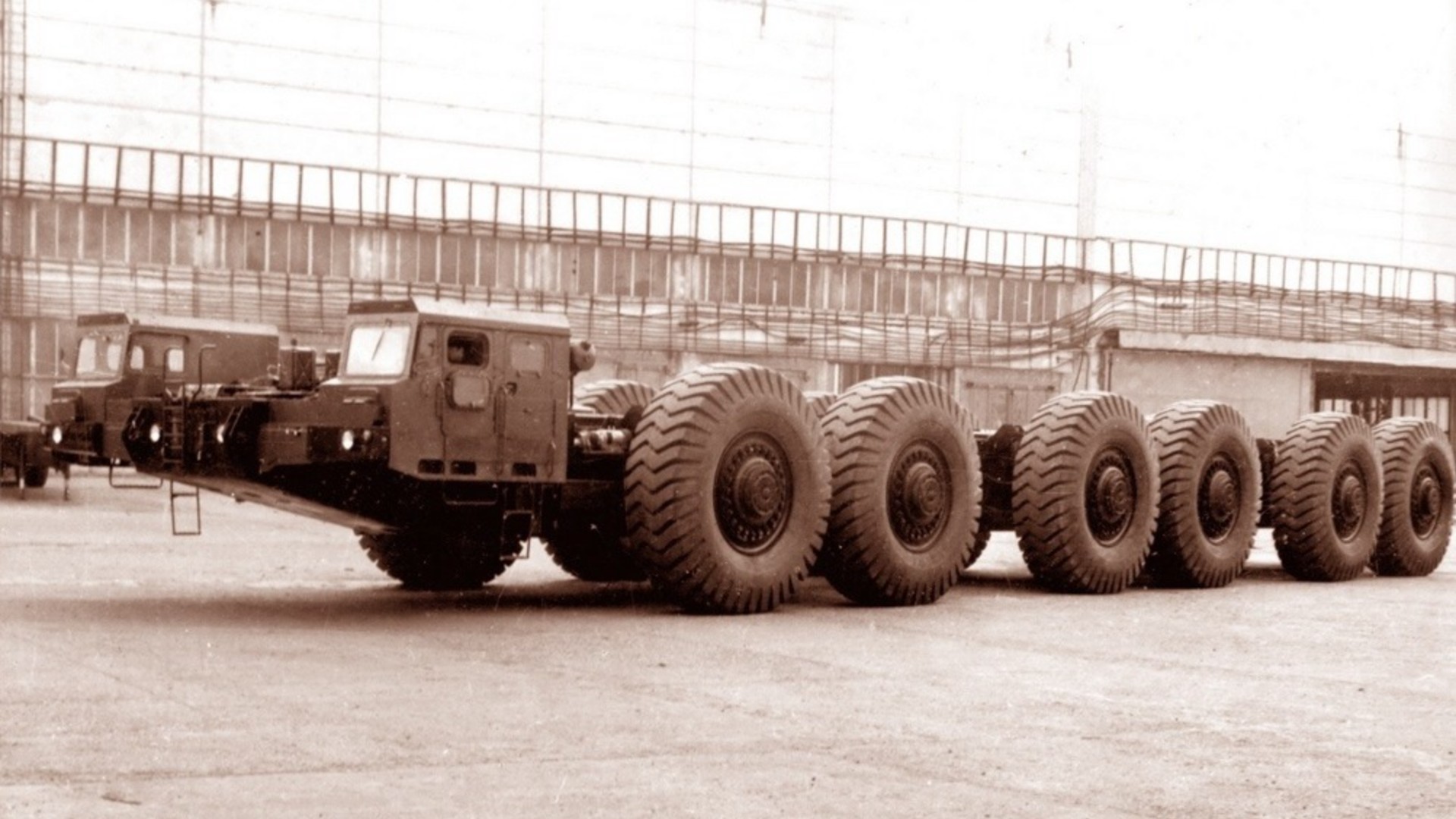

Be it sheer scale, or simply having more wheels than most terrestrial creatures have legs, some ultra heavy-duty vehicles just don’t compute. The brain can struggle to comprehend a cab being that small in proportion to something like a tire. One such confounding vehicle was the Soviet MAZ-7904, a mammoth missile carrier that fortunately never fulfilled its intended purpose.
Built in 1983, the MAZ-7904 was apparently constructed under cover of being a transporter for the Energia, the Buran space shuttle‘s lift vehicle, but was instead meant to support the Soviet ICBM program. Measuring over 105 feet long, 22 feet wide and 11 feet high, the MAZ-7904 weighed about 140 tons on its own and was designed for payloads of up to 220 tons. That would’ve given it a gross vehicle weight more than twice that of the heaviest tank ever built, the Panzer VIII Maus.



Those payloads would’ve been spread across six axles connecting gargantuan Michelin tires over nine feet across. Because Soviet industry was allegedly incapable of producing these tires itself, the USSR is said to have sourced them from Japan, under the guise of needing them for huge dump trucks. Each wheel was sprung independently with hydropneumatic suspension, which let the MAZ-7904 ply its nearly 19 inches of ground clearance to its fullest.
Powering the pumps for said suspension along with the MAZ-7904’s other accessories was a 14.9-liter, 330-horsepower YAMZ-238 V8. Motive power came from a larger, 42.4-liter turbodiesel V12, whose 1,500 horsepower traveled through twin four-speed boxes to either eight or all 12 of its wheels—sources self-contradict on this. Photos suggest there were also planetary gears inside each wheel, adding to the available ratios.


To keep the massive vehicle a secret, operators only clambered into one of its twin two-seat cabins for testing at night, and only when no western satellites were overhead. It covered 340 miles in initial testing before disassembly and relocation to Kazakhstan, where a further 2,500 miles demonstrated Soviet leadership’s dreams of a fleet of 10 were completely infeasible.
Not only did the MAZ-7904 handle poorly with a reported 164-foot turn radius, but it topped out at under 17 mph. And despite all its off-road accoutrements, it still required soft, easygoing terrain, in part due to wheel bearings that weren’t up to the task of shouldering 30 tons apiece.




In the end, when the missile program the MAZ-7904 was meant to support was canned, so was this leviathan, which wound up mothballed at the Baikonur Cosmodrome in Kazakhstan. By 2007, what remained of this monster had collapsed from rust, and in 2010, it was chopped up for scrap. A sad fate for a piece of machinery that’d make great Snowrunner DLC, but altogether a better ending for the world than the MAZ-7904 fulfilling its purpose as part of a superpower missile exchange.
Got a tip? Send us a note: tips@thedrive.com